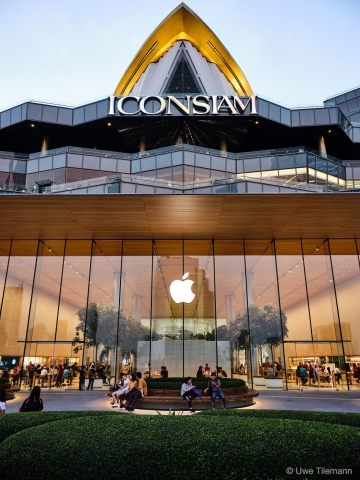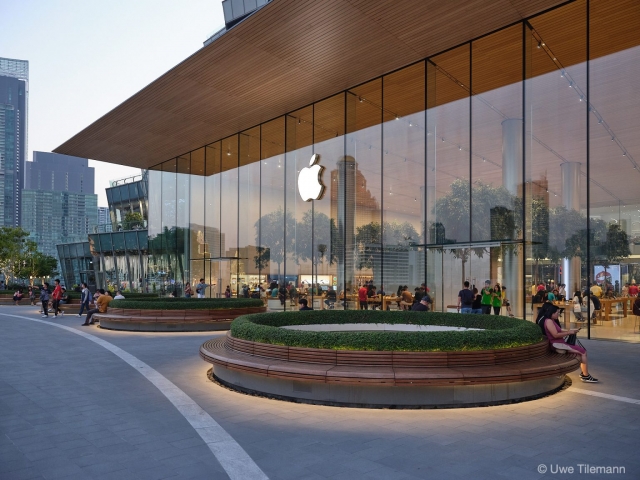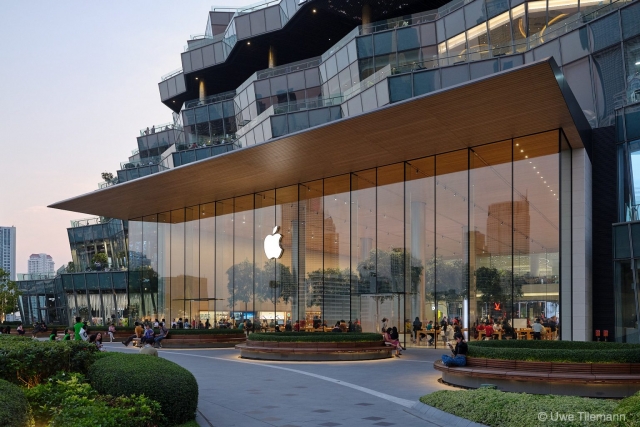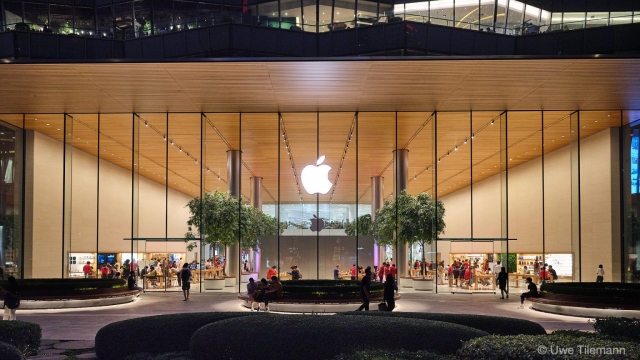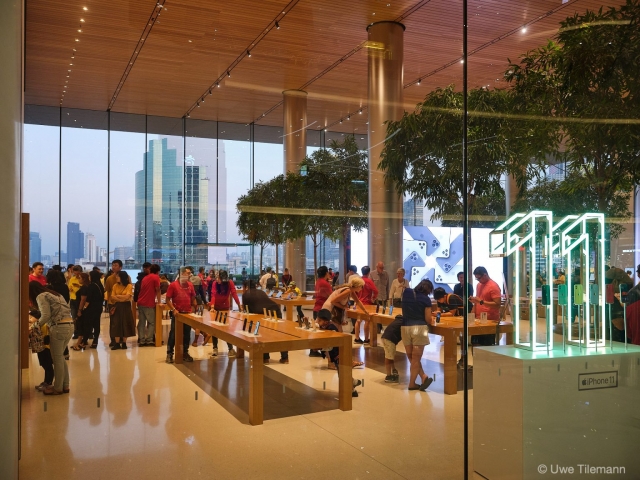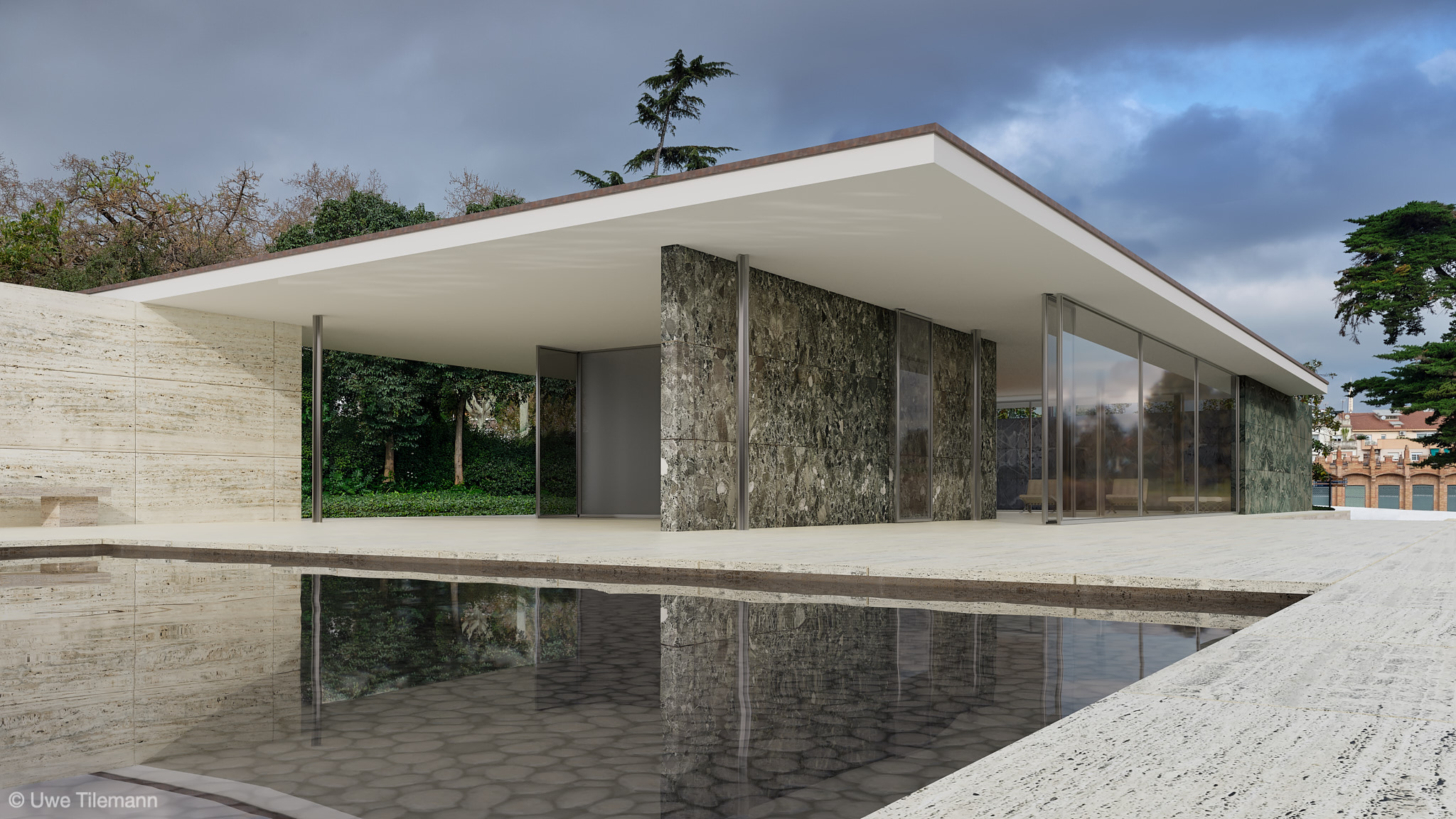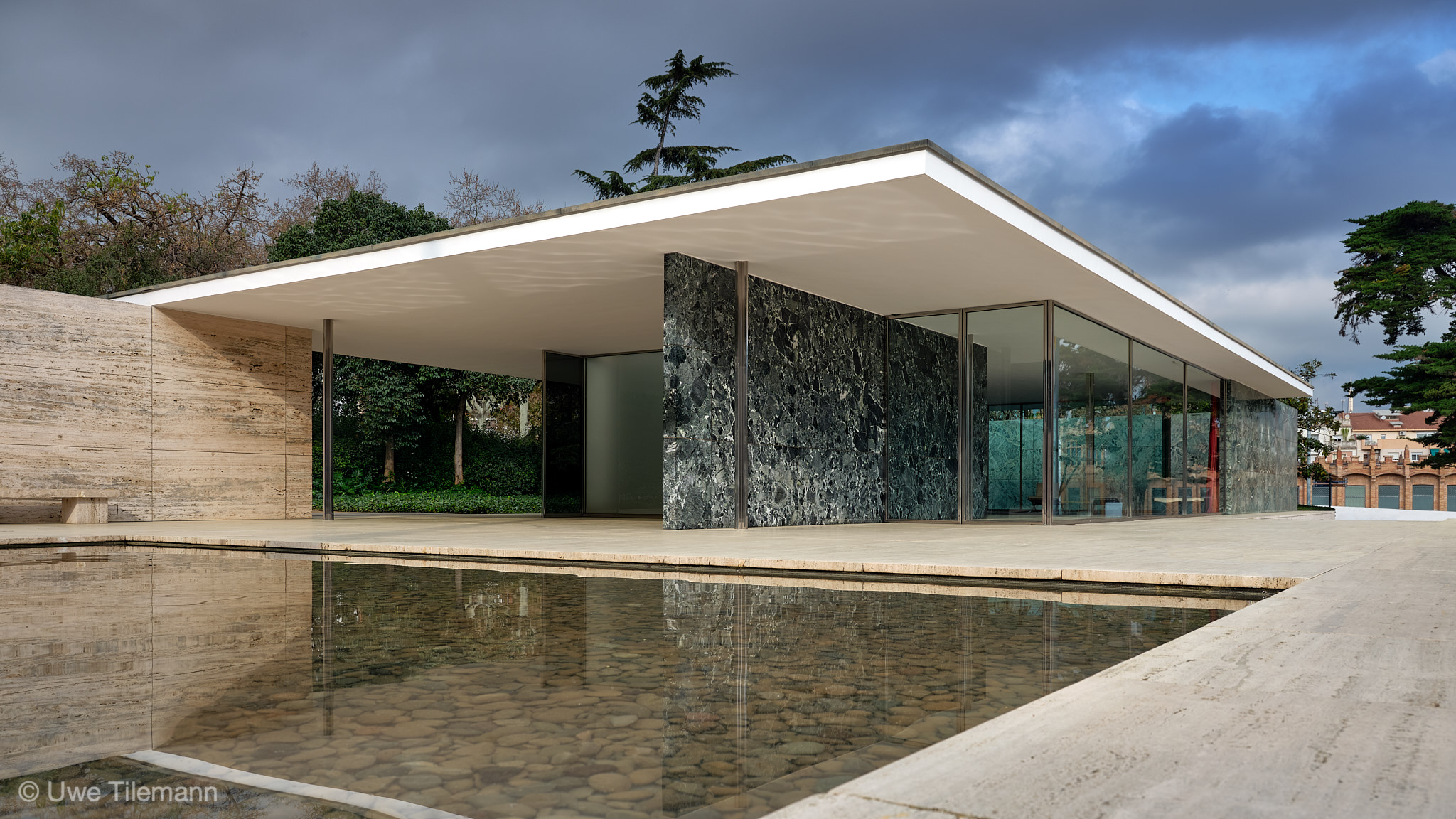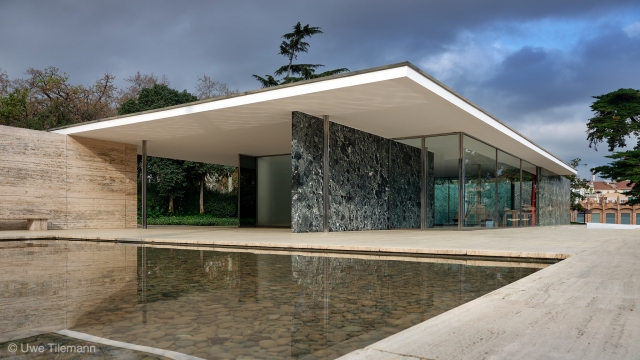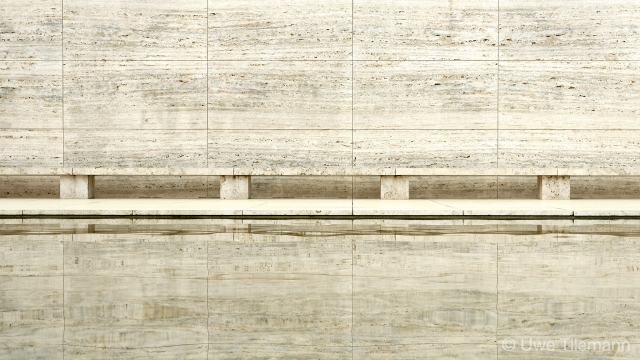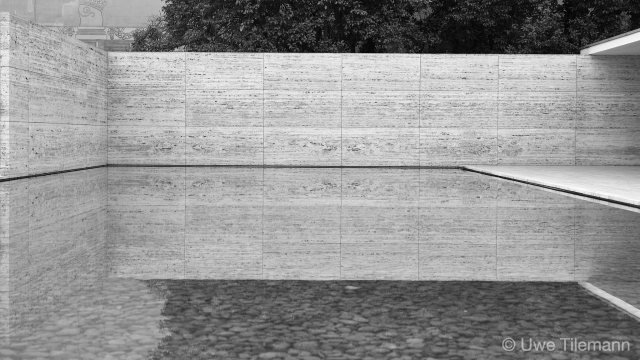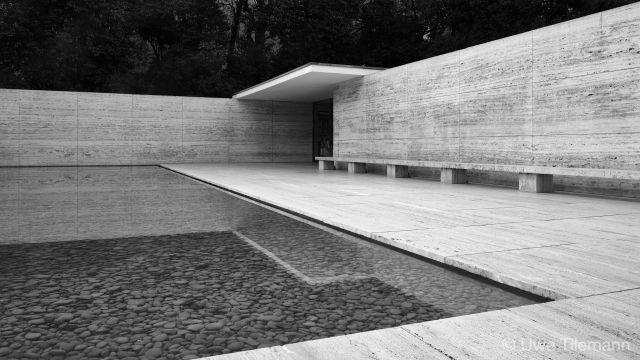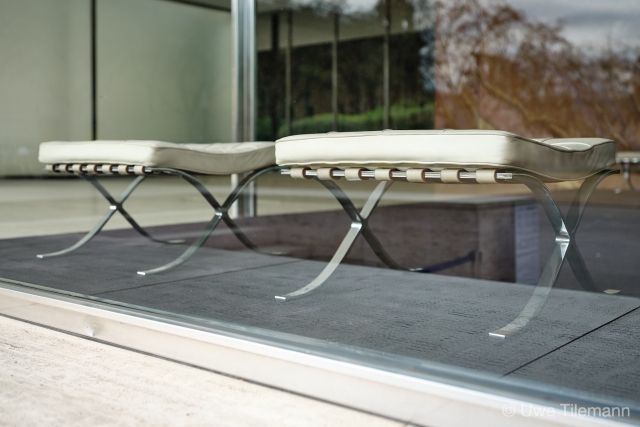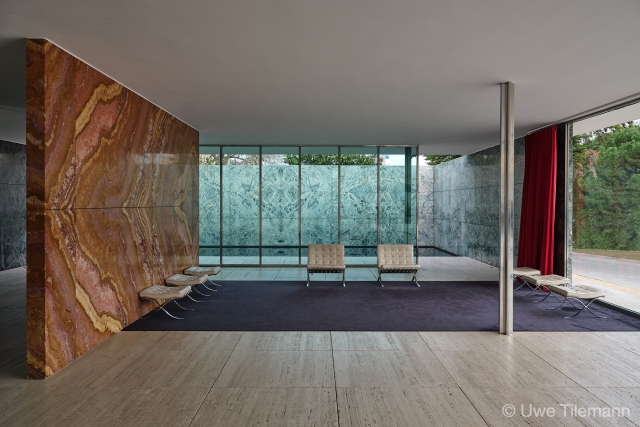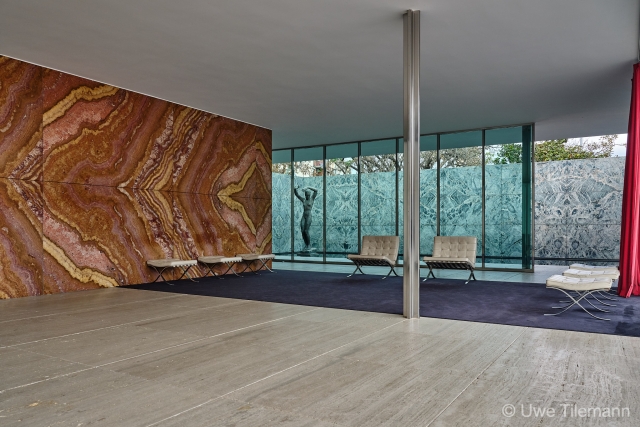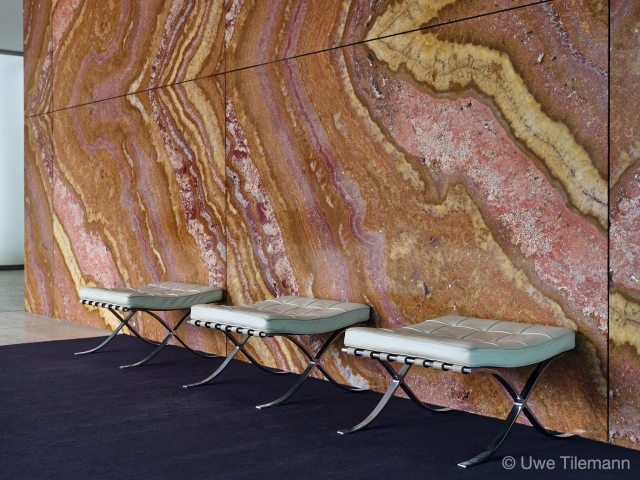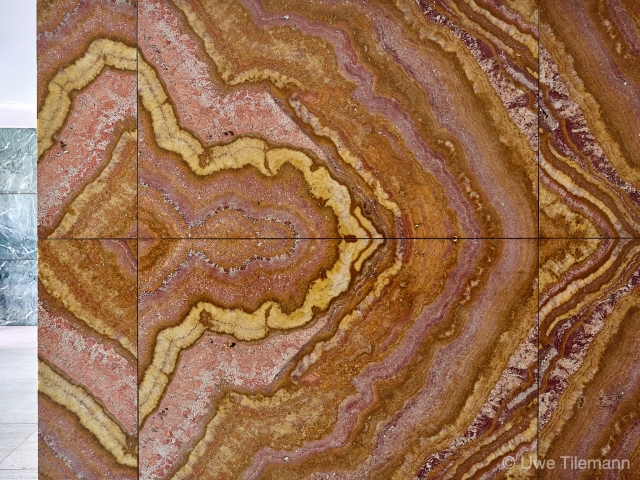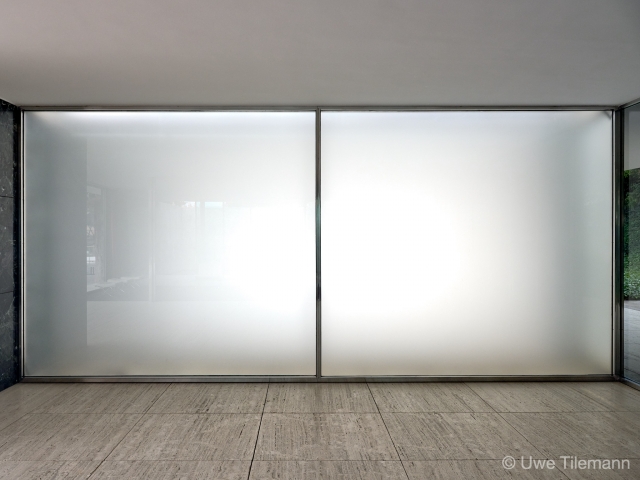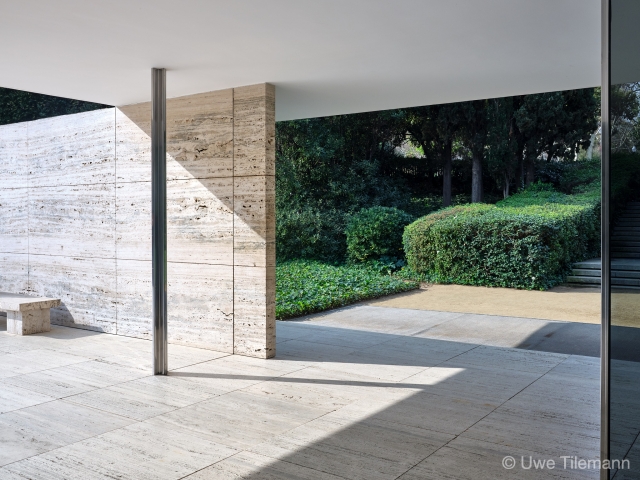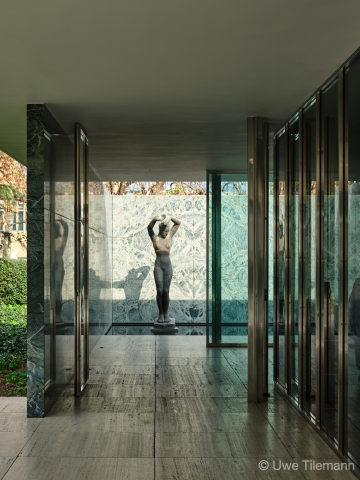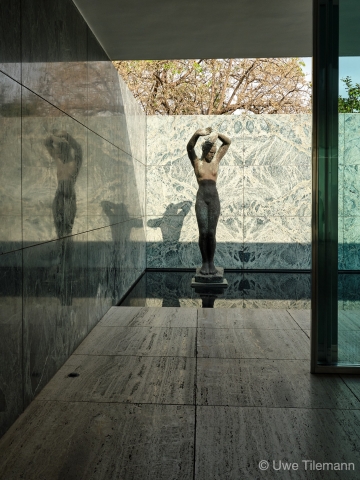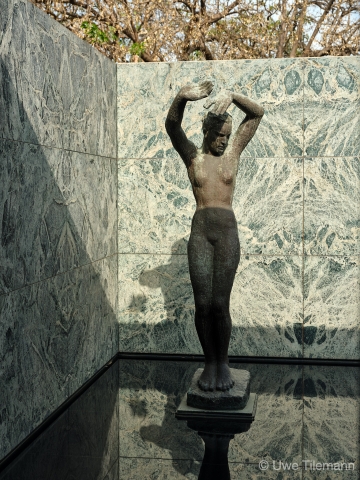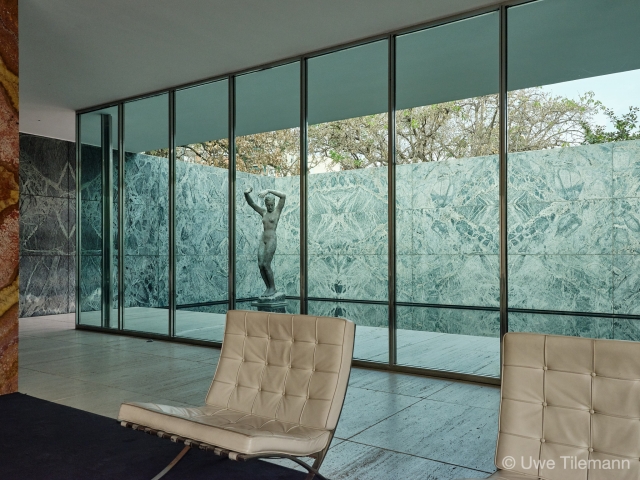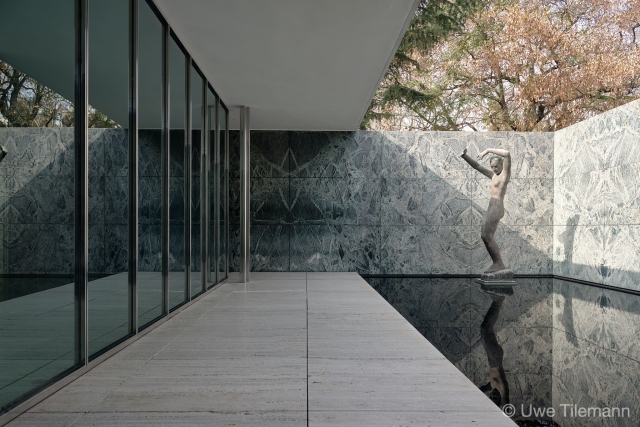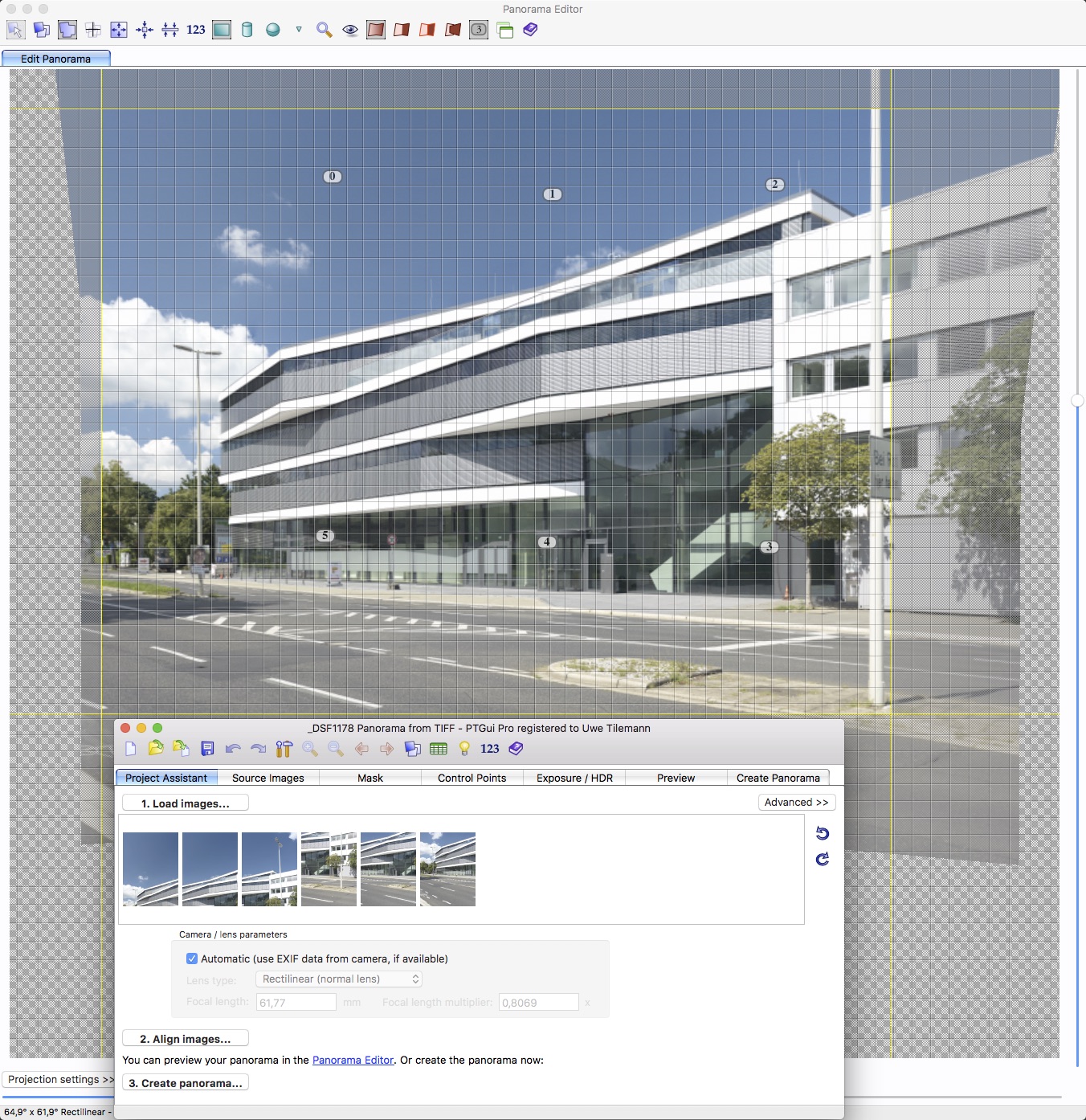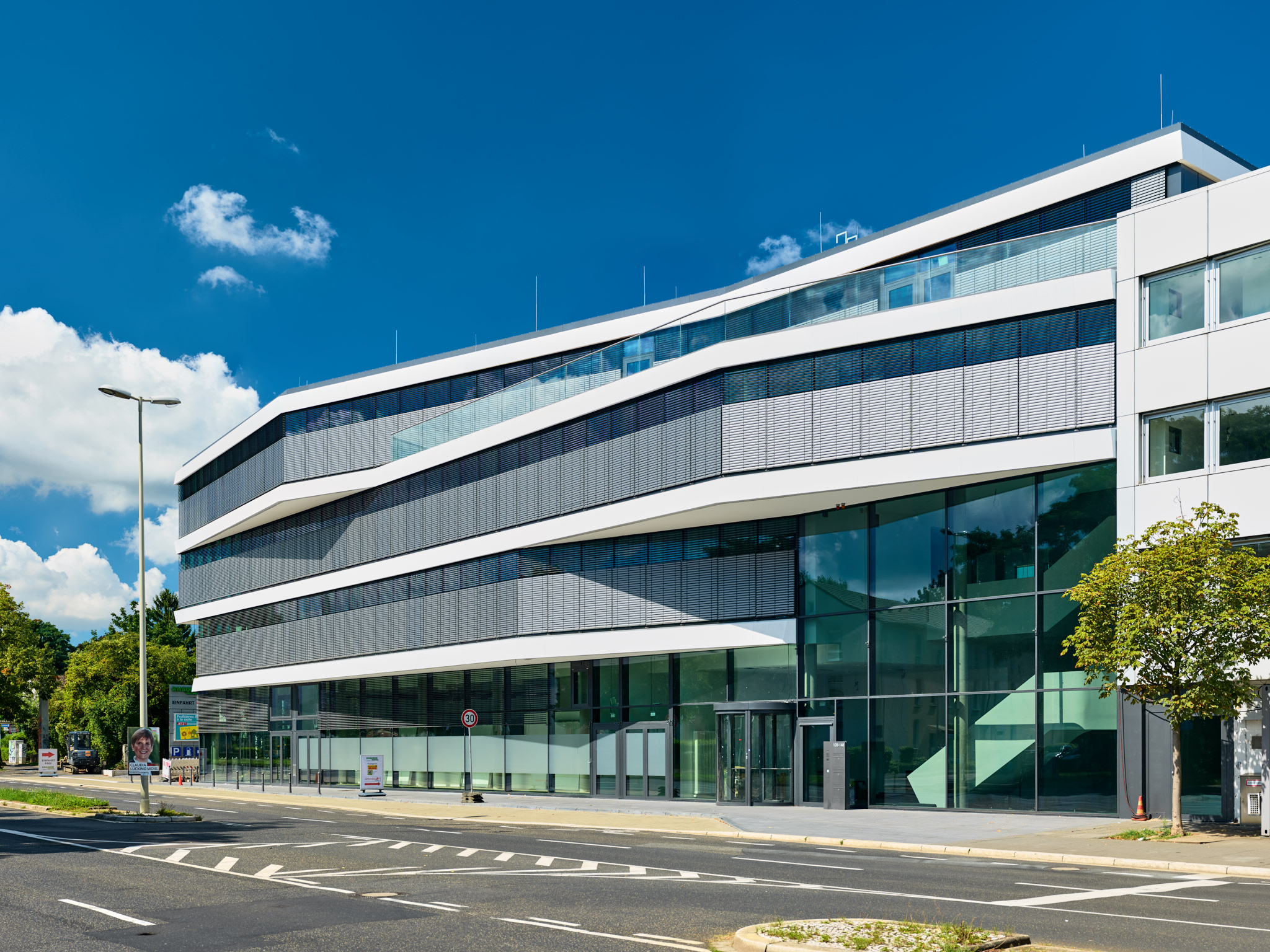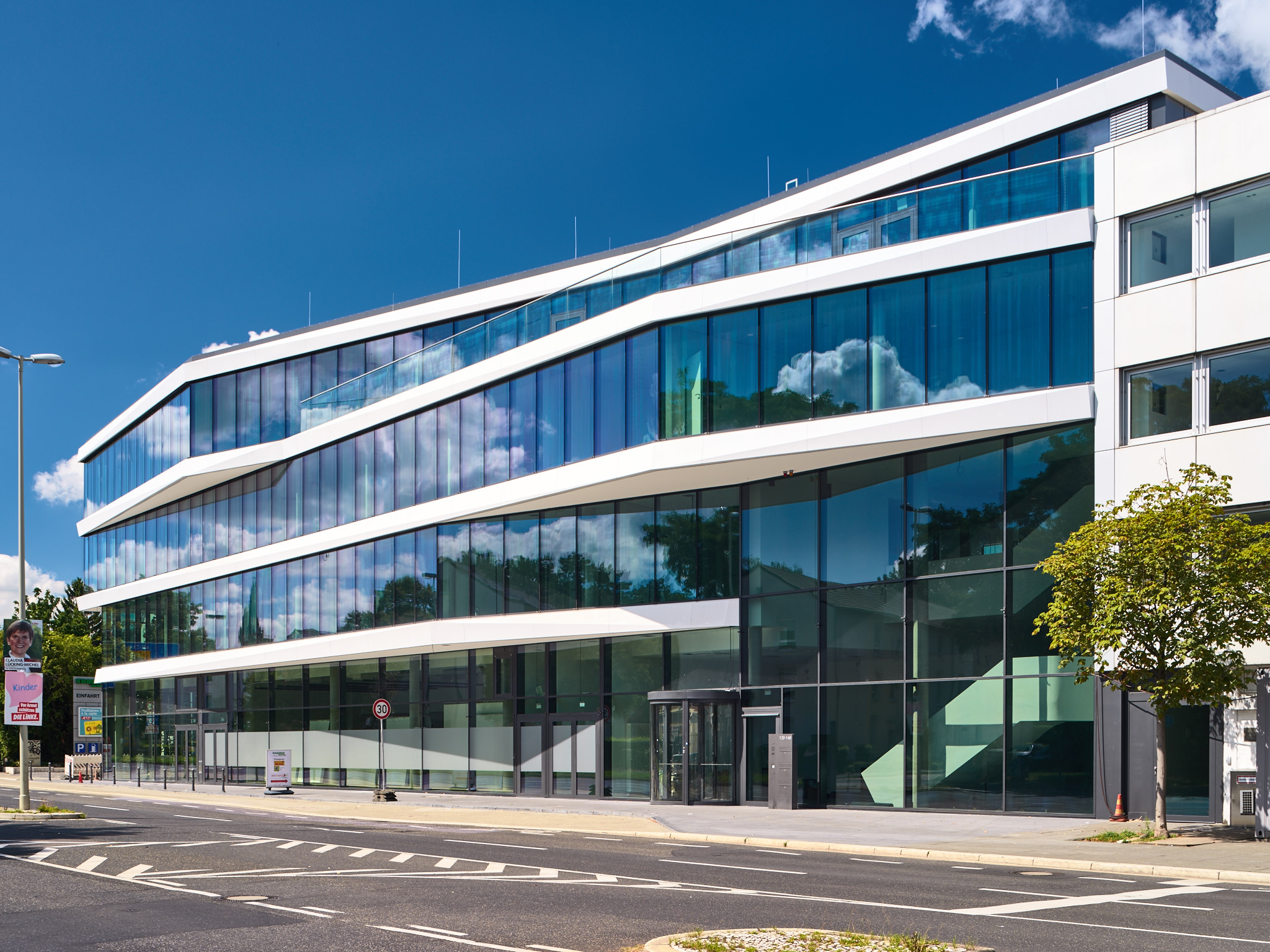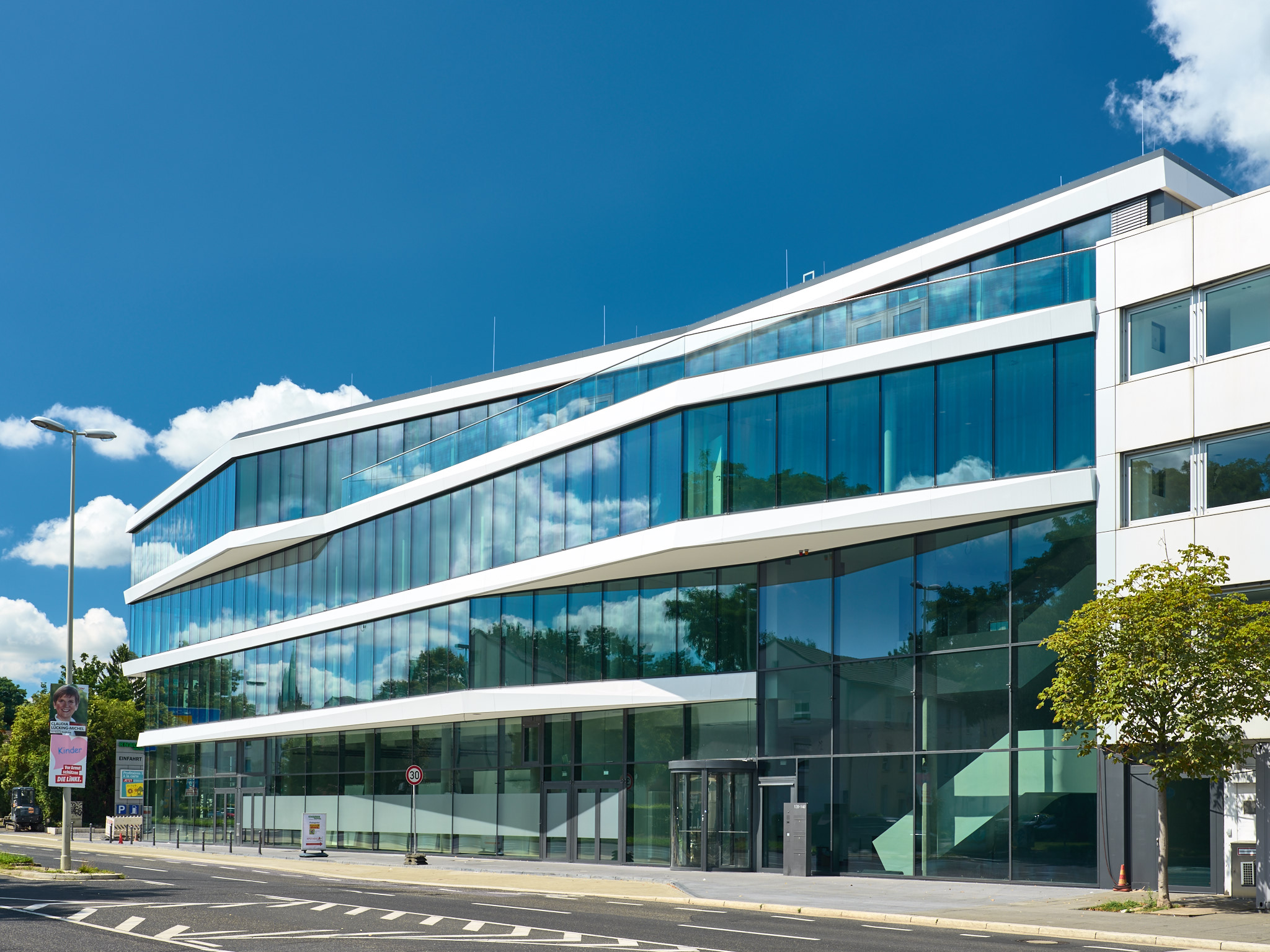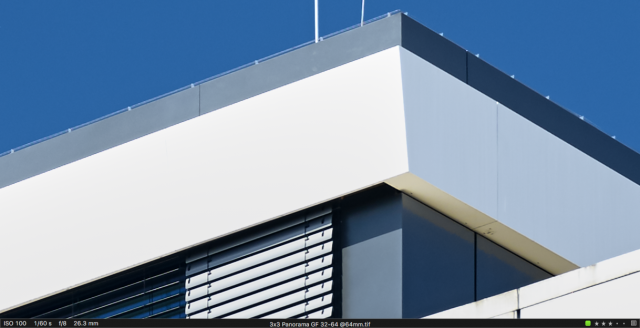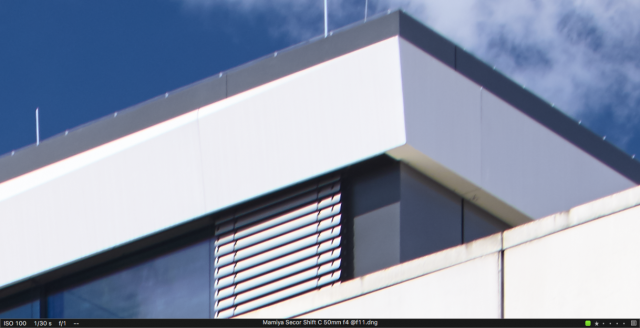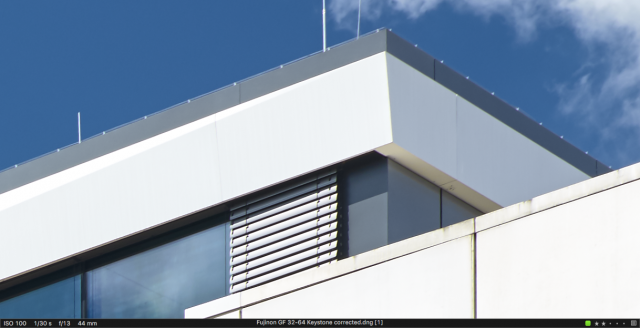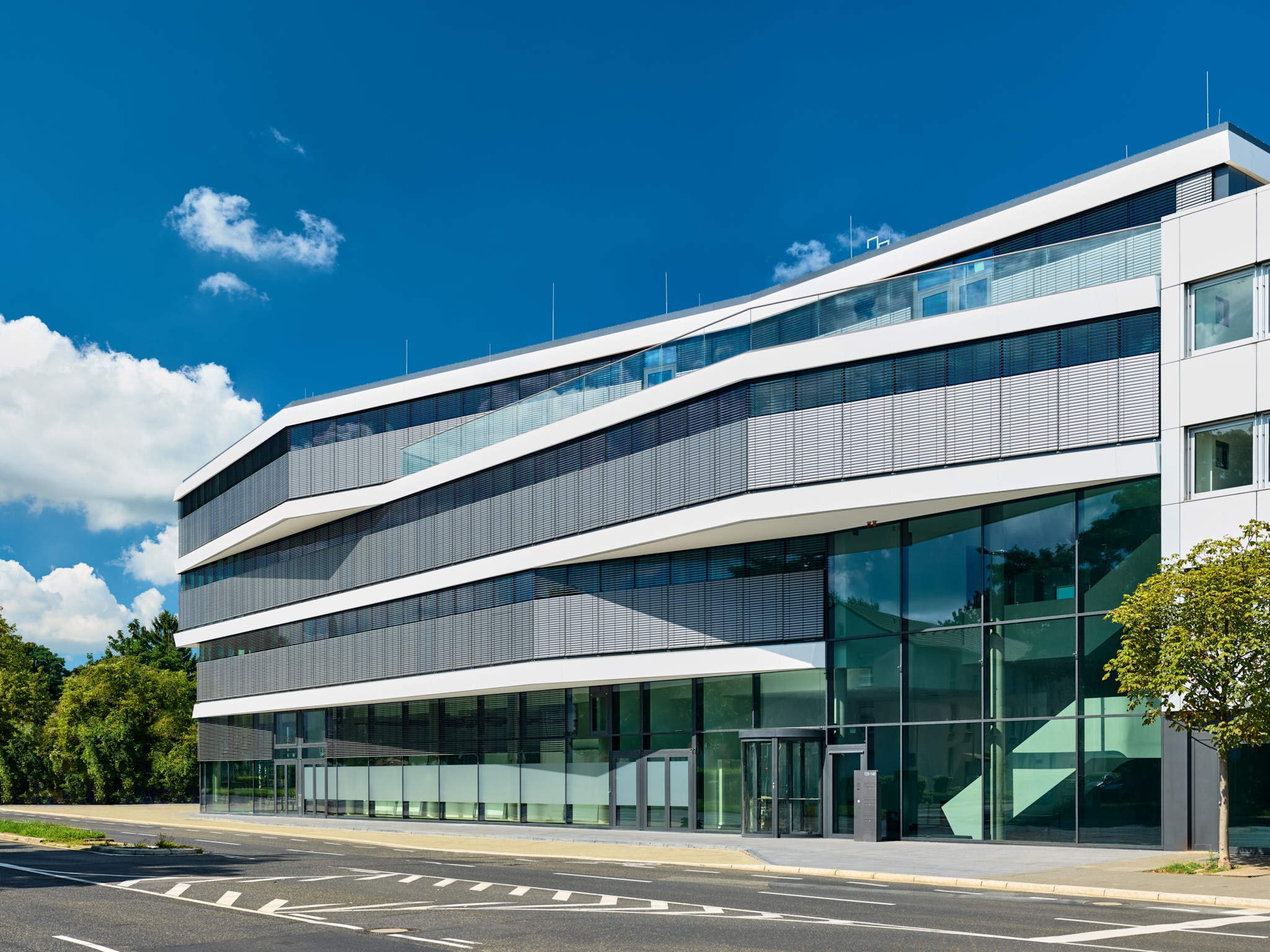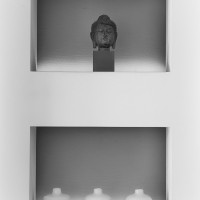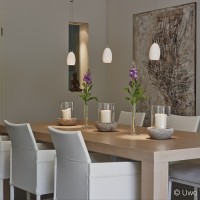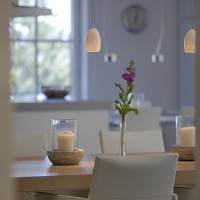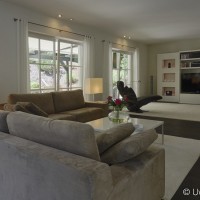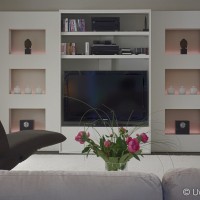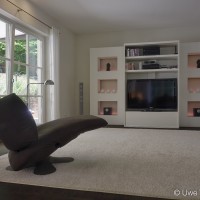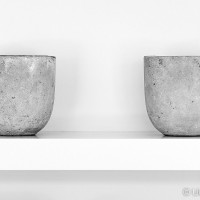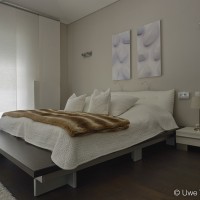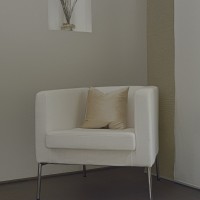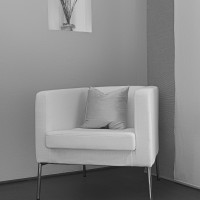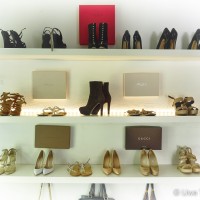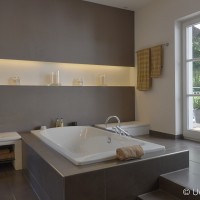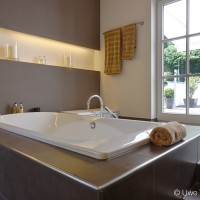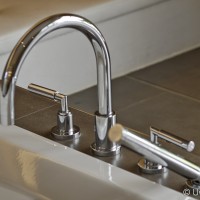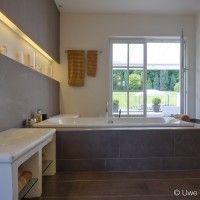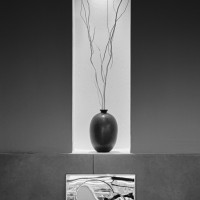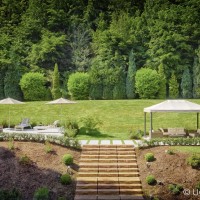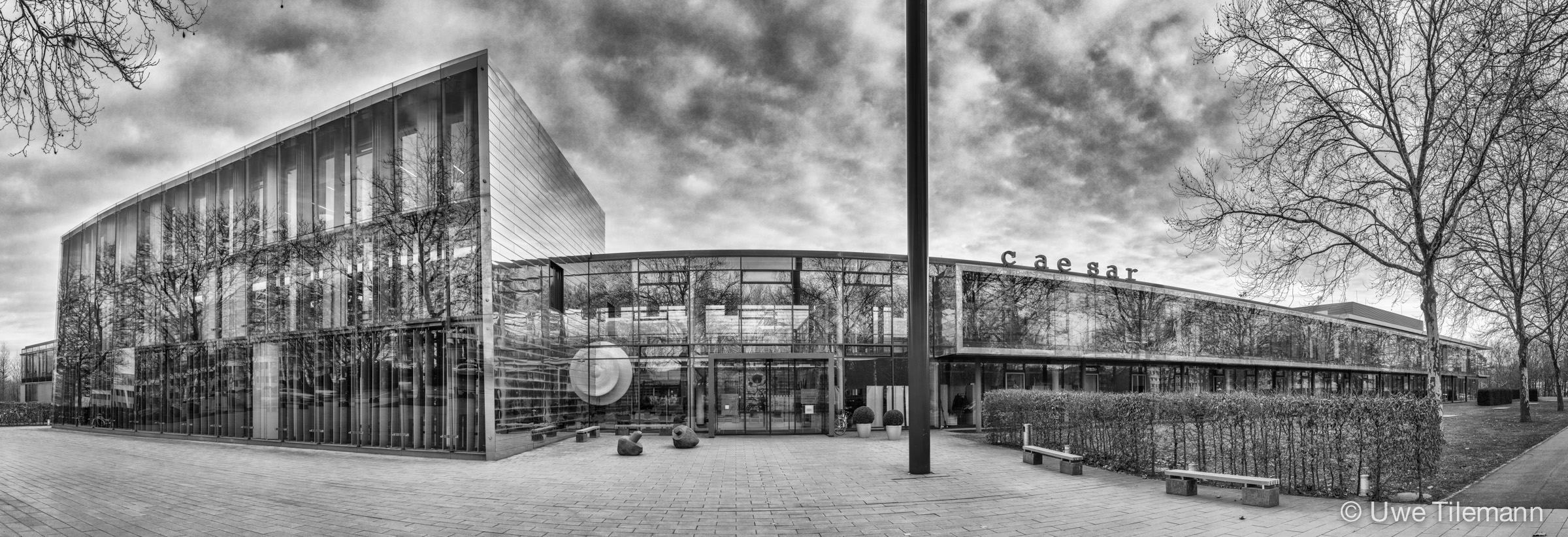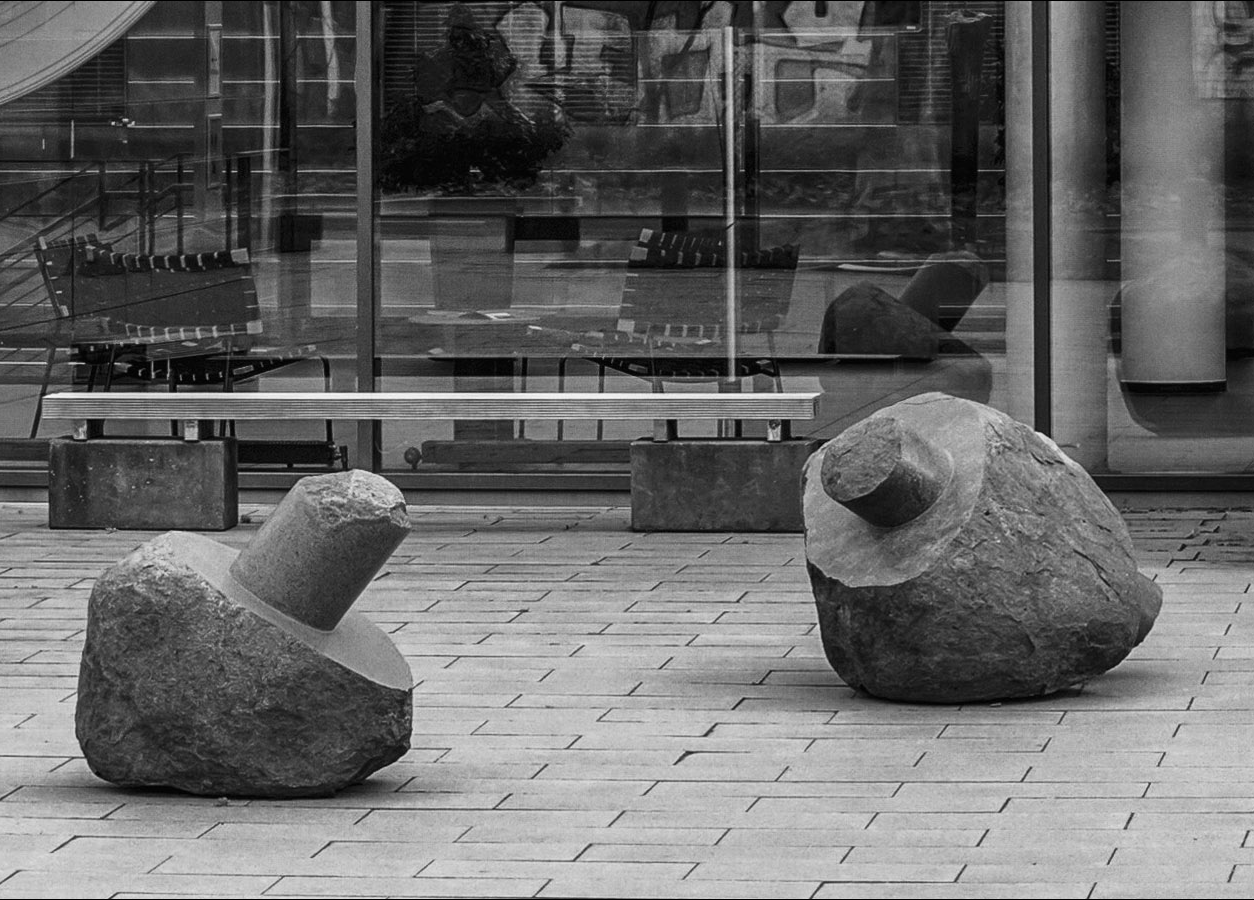The Apple Store in the ICONSIAM building in Bangkok designed by Foster + Partners 2018.
Archiv der Kategorie: Architecture
Rendering of Barcelona Pavillon
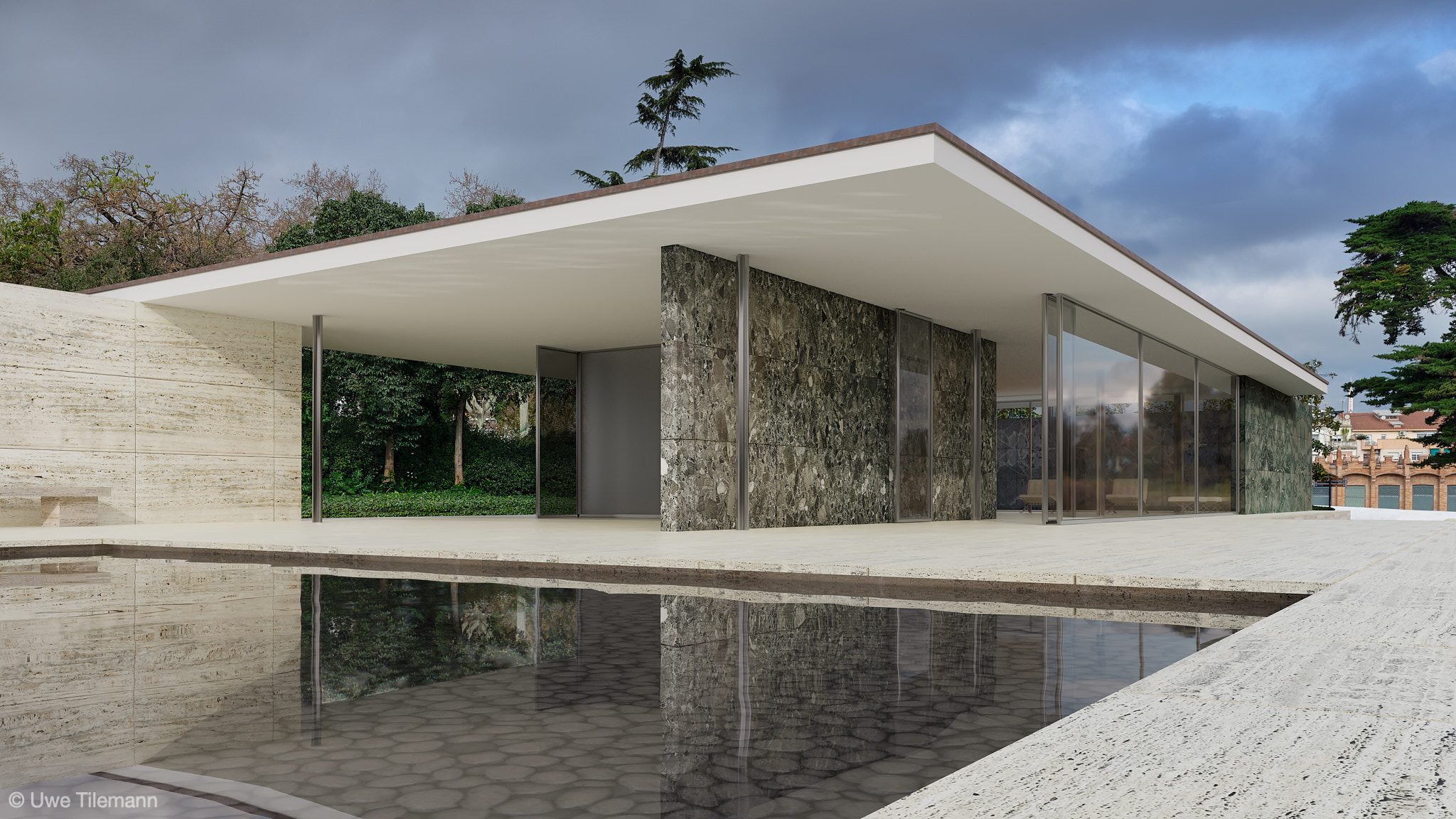
In March 2019 I was on a trip to Barcelona and took the opportunity to make some architectural photos of the great Barcelona Pavillon designed by Mies van der Rohe and Lilly Reich for the 1929 International Exposition in Barcelona.
Prior to that journey I’ve already created a 3D model of this piece of ground breaking modern architecture with the lack of good image sources of the used materials – marble, onyx and travertine. A great opportunity to make some nice architectural photos and also to get high quality image sources to create materials for my Physically Based Rendering (PBR) workflow.
I arrived at the location half an hour before opening with enough time to make a reference photo without any people around. The sky and background from this photo is used as the background for the rendering above.
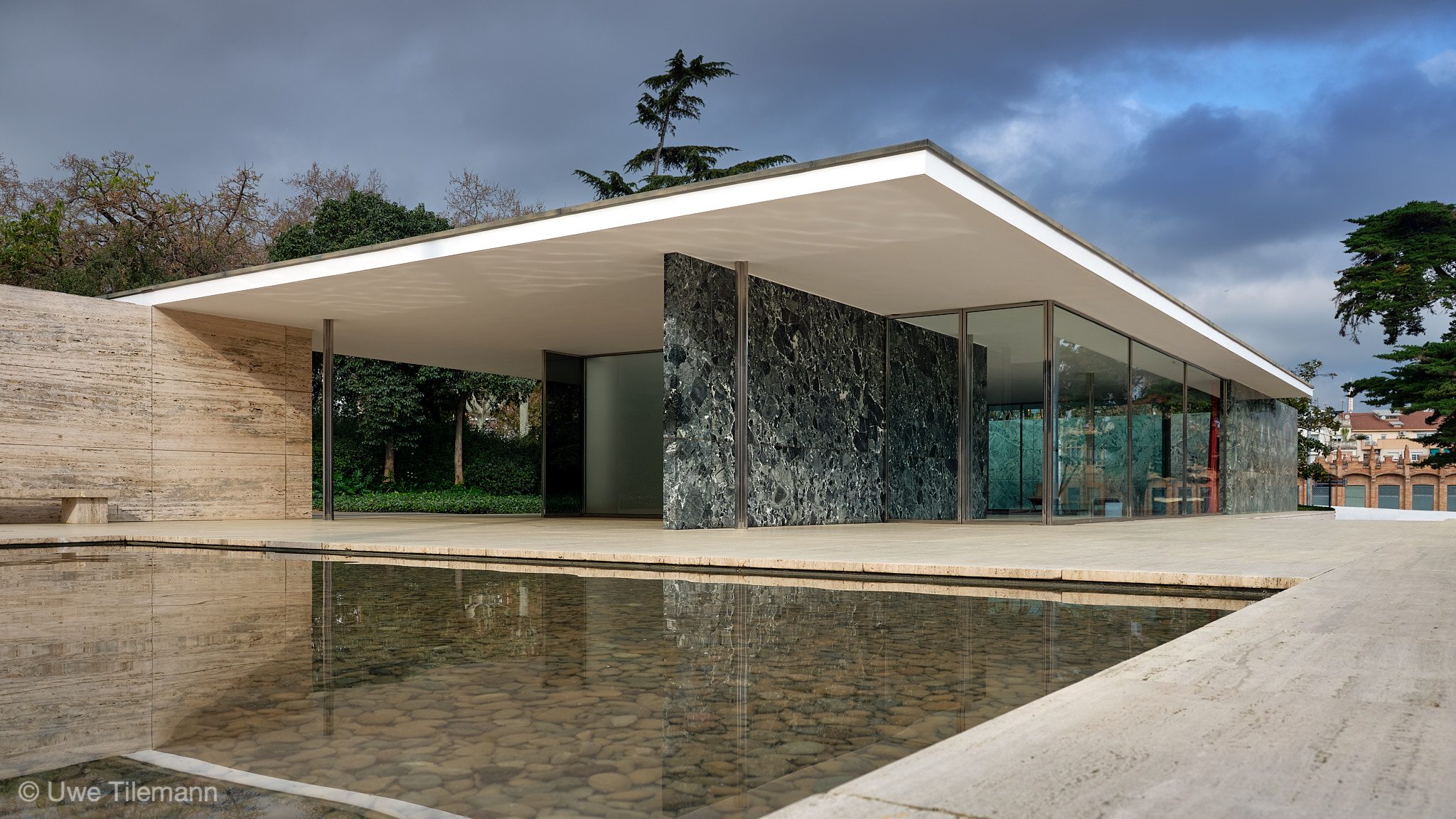
In the next hour I took 90 photos. Some architectural ones you can see here. The rest were details of the used materials and some construction details.
Back home I’ve used Capture One Pro to develop and prepare the images I like to use in my rendering.
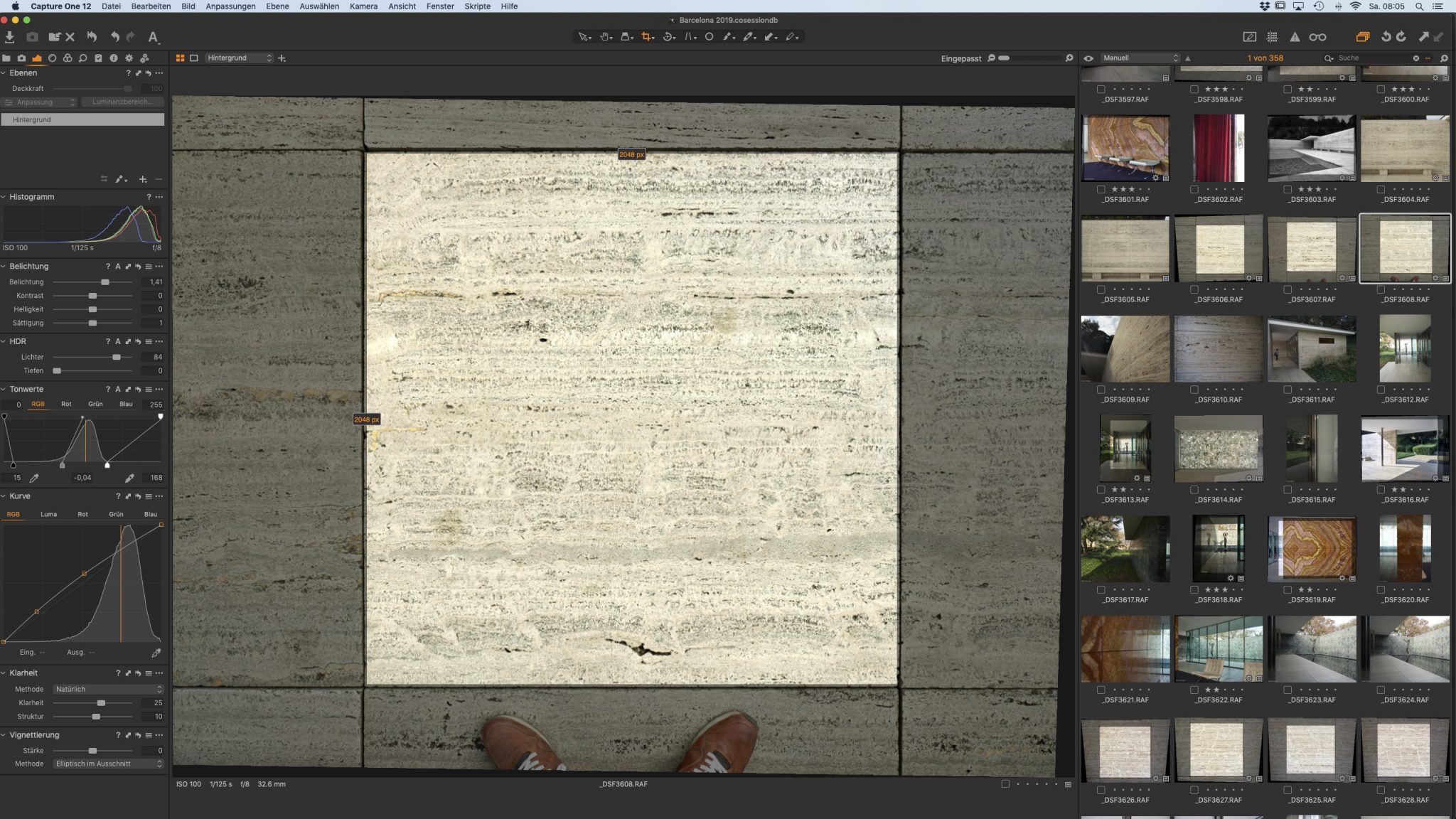
These images got some retouching using Affinity Photo and I drag and drop them into PBRtist to create a realistic 3D material.
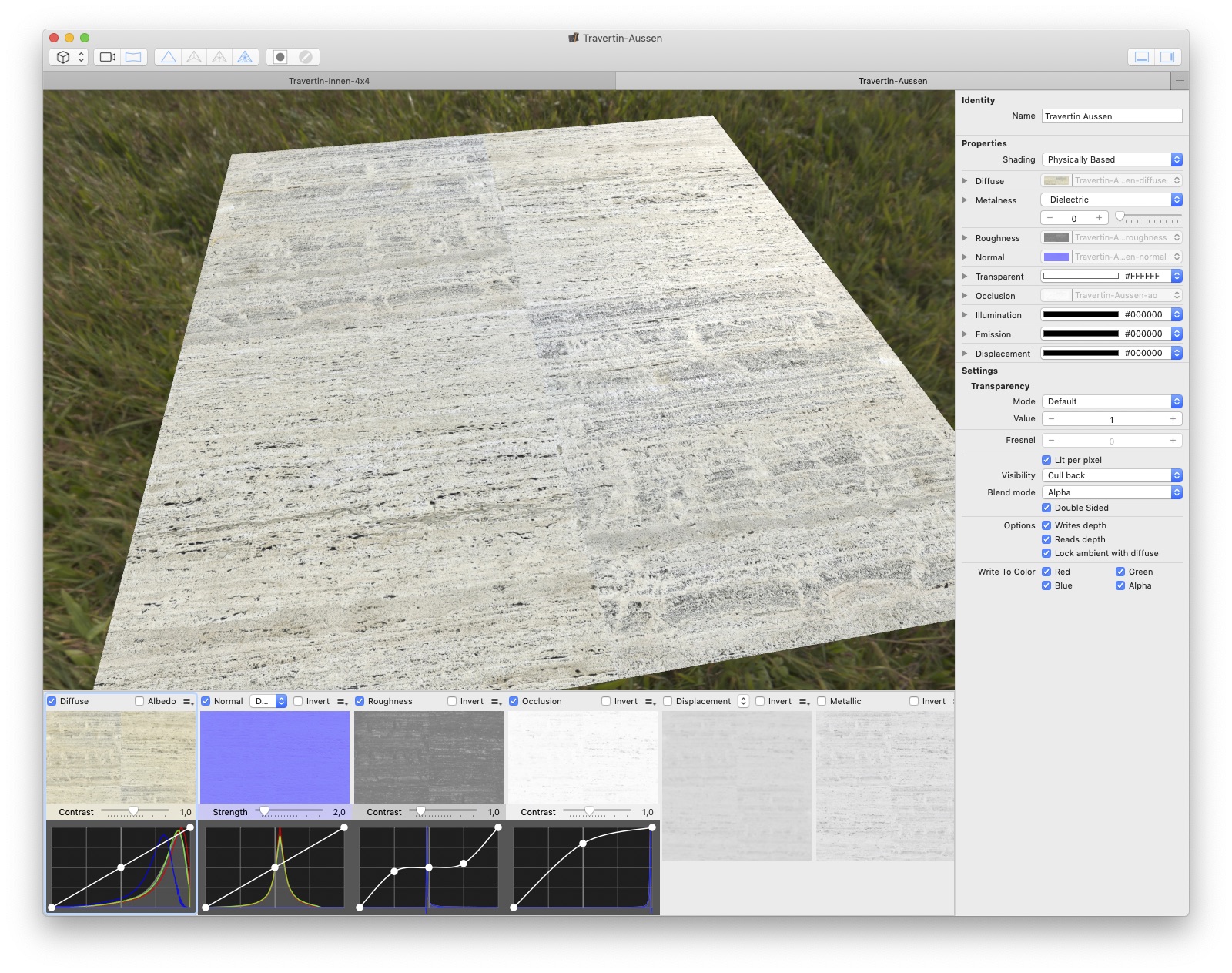
PBRtist is a tool to create all maps used in a Physically Based Rendering (PBR) workflow based on a single image. For this travertine material I’m using the Diffuse, Normal, Roughness and Occlusion map. PBRtist has a seamless integration for Cheetah 3D to export a material to Cheetah’s material format.
This was done for all materials used in my 3D model based on the images took on location – the big golden reddish marble wall inside the main house (which is not visible here), the greenish marble walls at the entrance and around the main building. Also the travertine used in the walls around the pool are based on separate image sources. With PBRtist this job was done in minutes.
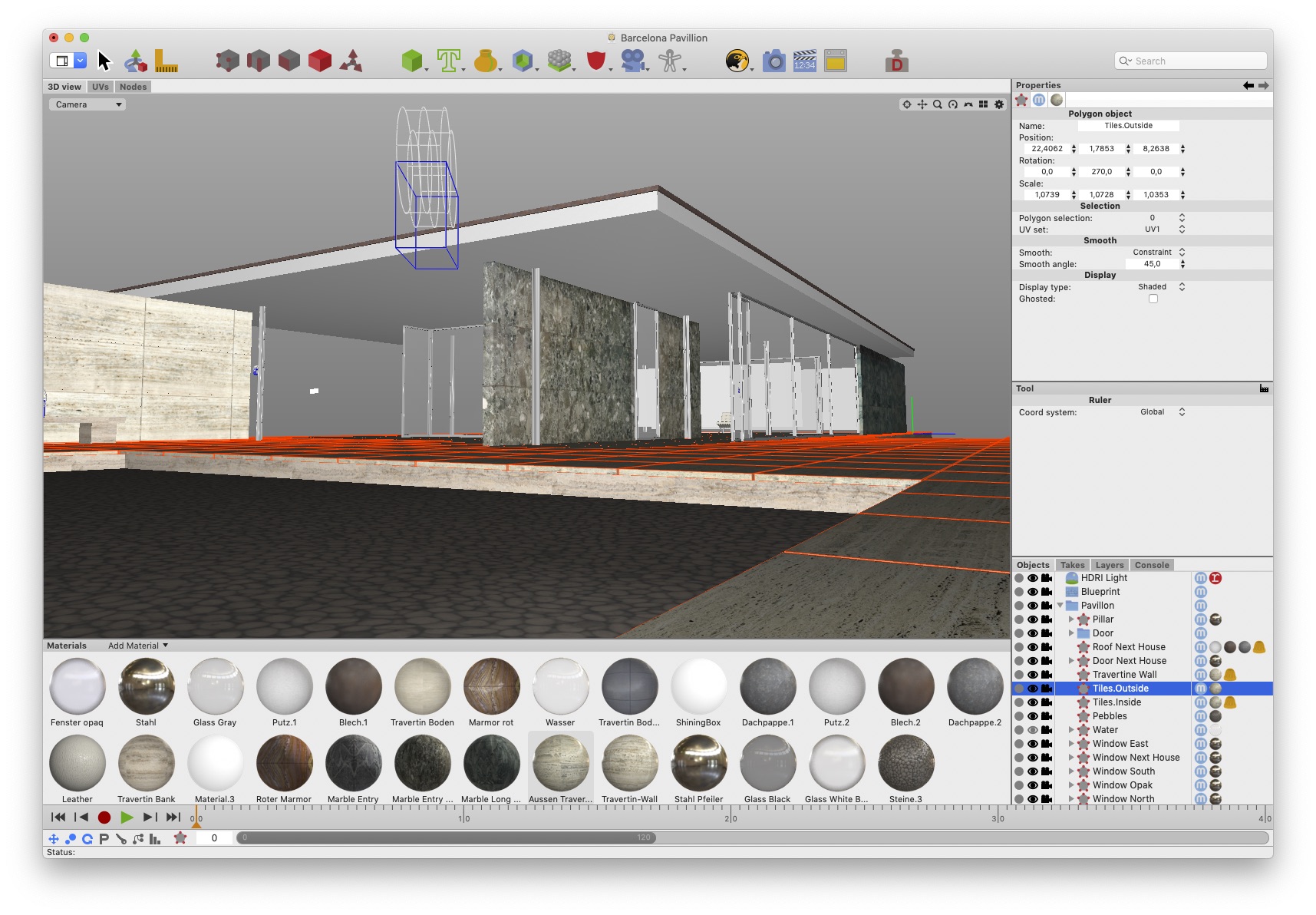
The final rendering was done in Cheetah with a resolution of 7282 x 4096 pixel, the size of reference photo you see above. The background of the rendering is transparent, because I want to do some keystone correction and compositing with Affinity Photo later.
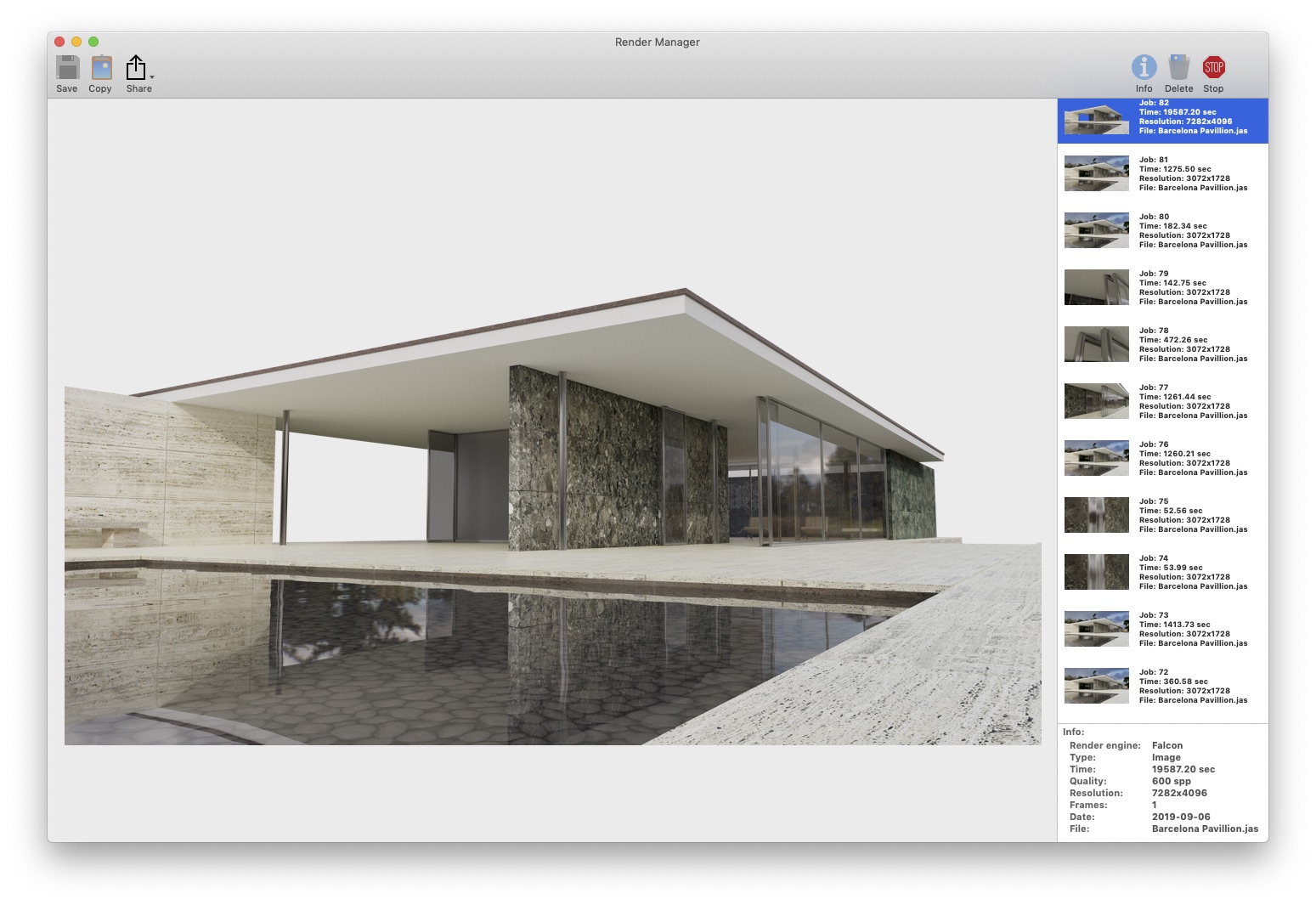
Here the final image keystone corrected and composited with the background from the reference photo above in Affinity Photo.
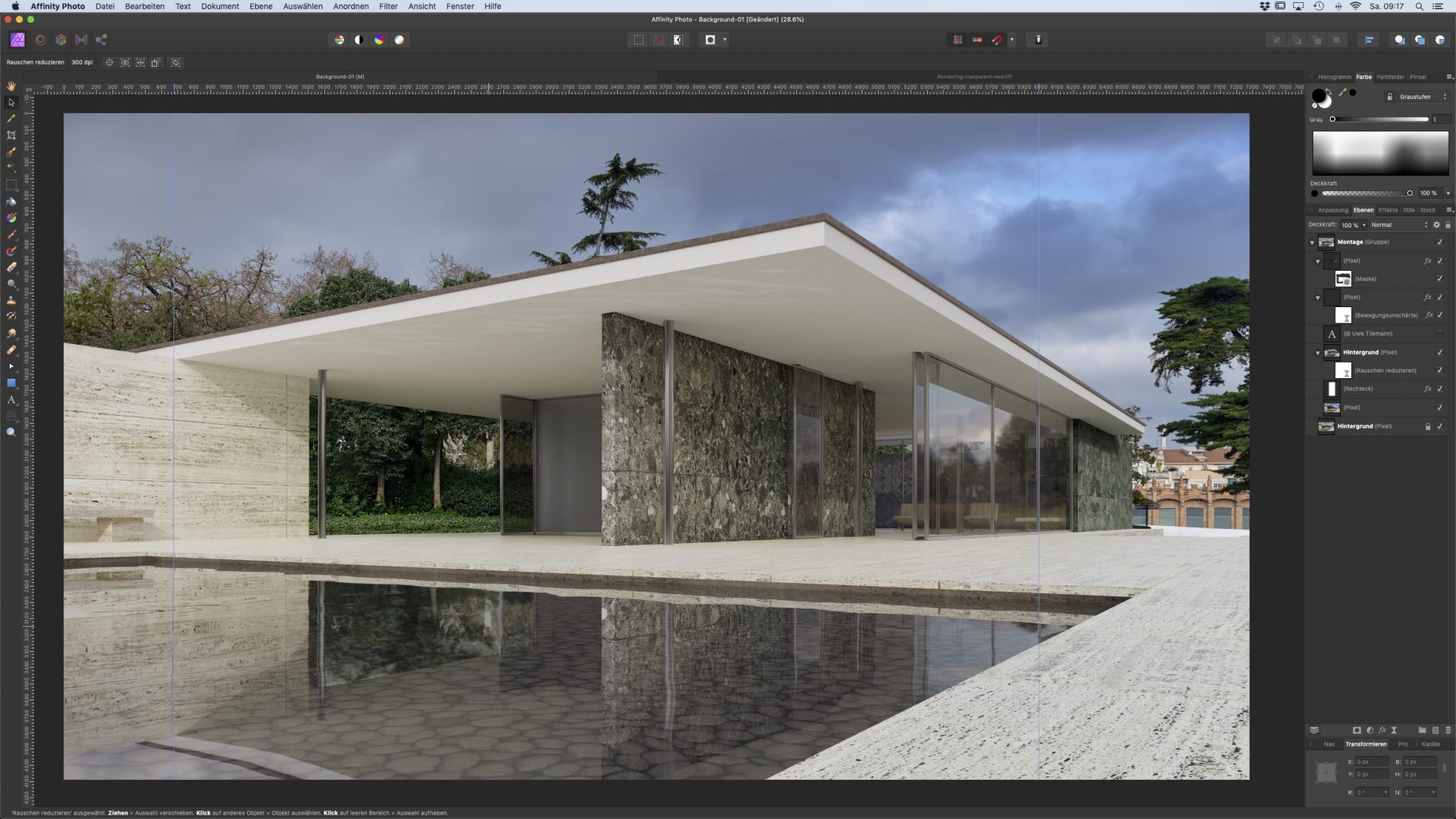
As a give-away here an USDZ file from the Barcelona Stool used in my model.
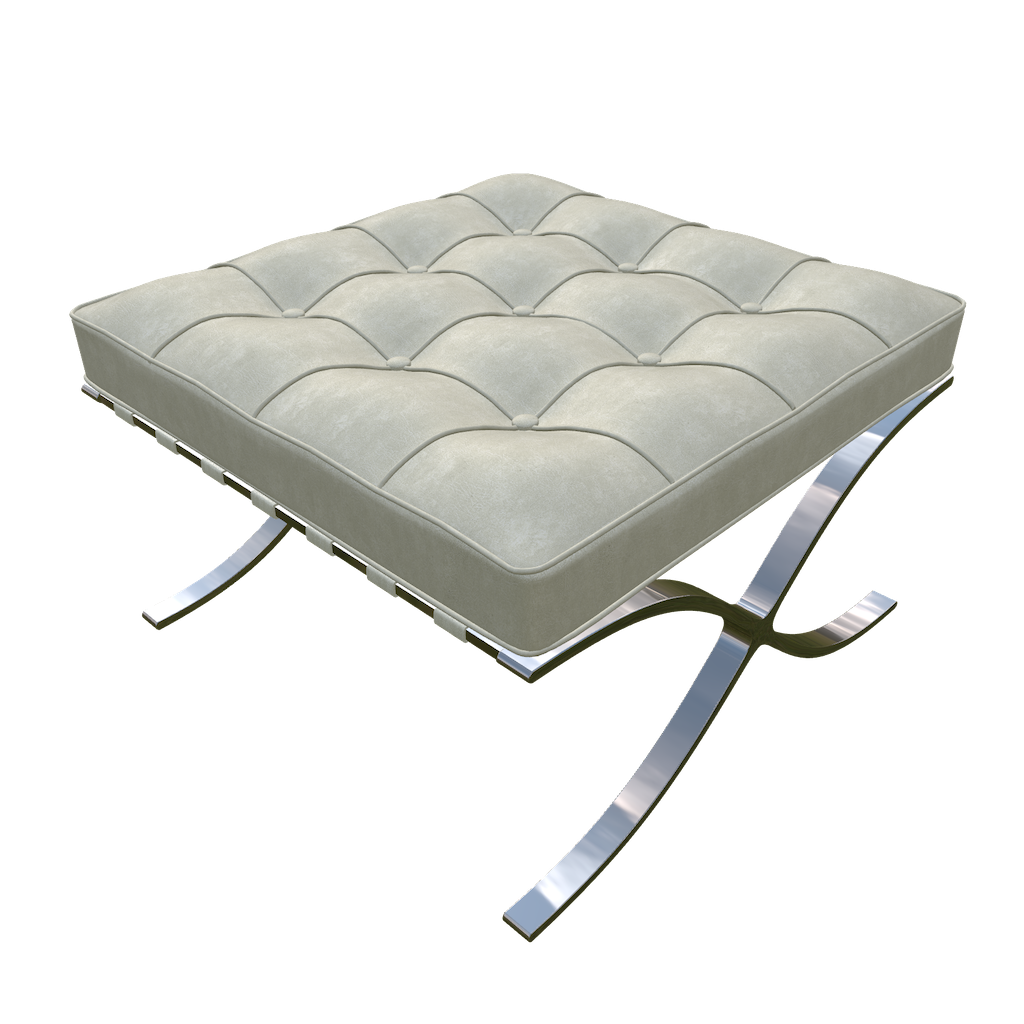
Barcelona Pavillon
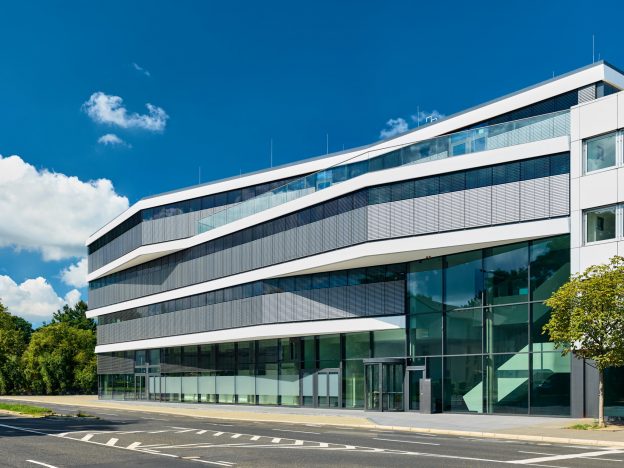
Fujifilm GFX 50s Mamiya Shift 50mm vs. Keystone vs. Panoramic Head
In this article I compare three solutions to create a perspective controlled architectural photography.
- 3 by 2 stitched and keystone corrected image using a panoramic head and the GF 32-64 @63mm
- vertical shifted image using an old Mamiya 645 Sekor C 50mm shift lens
- single keystone corrected image using the GF 32-64 @44mm
All RAF files were imported to Lightroom and exported directly as DNG files. Alternatively you can use Adobe DNG Converter or Irident X-Transformer for the conversion.
RAW development were done in Capture One Pro 9.3. As long as Phase One is not willing to support the RAF files natively, the DNG conversion is the only way to get Capture One to work with the GFX RAW files. I have not update to version 10 of C1 yet, because with the latest version you have to fiddle the EXIF meta data. Phase One actively blocked this camera model in the latest version to protect their camera business.
Another problem with Capture One is that the DNG files do not have the correct color profile, resulting dark and dull images. To solve this I have used the GFX 50s ICC profile from Ken Dun Photography’s website. Additional adjustments were done on the final images: increased saturation, recovered highlights and shadows, added a bit of clarity. Using Capture One’s automatic buttons gives a good starting point for these adjustments.
Panoramic Head and GF 32-64 @63mm
These six images were exported to 16bit TIFF files and loaded in a new PTGui Pro document. Clicking „Align Images“ let PTGui to analyse the images to search for matching control points for sticking the images together and displays a preview of the panorama. In the „Panorama Editor“ I have corrected the perspective and cropped the image. Clicking „Create panorama“ let you specify the file type and settings. The setting were 16bit TIFF file, with packed bits compression and no alpha channel. C1 can’t handle TIFF files containing an alpha channel.
The resulting image has a resolution of 11094 x 8501 pixel (94MP). This image were cropped in C1 to the desired size and some little more adjustment were done.
Pros
- High resolution result
- Very good Image quality
- Big field of view
- Works with all kind of lenses (primes and zooms)
Cons
- Additional gear needed
- Time consuming process
- Keystone correction downgrades possible image quality
- Tripod recommended
Mamiya Sekor Shift C 50mm lens
Using a shift lens is the classic way for architectural photography solving the problem of perspective correction. The problem with the new Fujifilm GFX 50s is, that there is no native shift lens yet.
I’ve got the Mamiya Sektor C 50mm shift lens from eBay for 550 Euro. With the Fotodiox Pro M645-GFX adapter this lens fits on the GFX 50s.
Pros
- State of the art perspective control
- Less time consuming process compared to panoramic head solution
Cons
- Poor image quality
- Tripod recommended
Keystone corrected single image @44mm
Pros
- Shooting handheld possible
- Most less time consuming process
Cons
- Keystone correction downgrades image quality
Image Quality
The following gallery shows 100% crops from the upper right corner of the building:
The image quality of the pano is the best one followed by the single shot at @44mm. The IQ of the Mamiya lens is worse and not acceptable for a modern medium format camera.
Conclusion
In the end I prefer the solution using a panoramic head. The image quality is the best of all. I can shoot exteriors with my preferred focal length of 63mm (50mm full frame equivalent) wich gives the most natural field of view. It’s the most time consuming process, but it’s worth the result.
The simple one shot and keystone corrected result is also acceptable. This solution is simple and the most less time consuming way. You can avoid problems with ghosting and shooting handheld is possible.
The Mamiya shift lens is only acceptable for low resolution images. The IQ especially in the corners is really bad. Maybe I’ll give an Contax 645 Zeiss 35mm lens in conjunction with a shift adapter a try, but this will be a quite expensive way. 1.000 Euro for a used lens from eBay and additional 450 Euro for a Mirex adapter is not a cheap experiment.
Based on the panorama created from six images, I have used this source for retouching. It was done completely in Affinity Photo. I prefer this software over Photoshop, because it’s more easy to use and the recovery brush works very well in most situations. I was able to remove the street light on the left side just by masking it out.
Einfamilienhaus in Bonn
Ende Mai 2014 entstanden folgende Fotos eines moderniserten Einfamilienhauses aus den 1950er Jahren:
Neue Bilder vom Posttower Bonn
Nach Eintreffen des Lee Filter Systems Sev5n von linhofstudio.com mit Verlaufsfilter, Polariser und dem Big Stopper, der eine Verlängerung der Belichtung um 10 Blendenstufen erlaubt, habe ich heute einige neue Bilder vom Posttower in Bonn erstellt.
Die Belichtungszeiten einiger Bilder konnten dank des Big Stopper auf 40 bis 60 Sekunden verändert werden.
Panorama Caesar Bonn
Am 15.01.2014 wurde ein Panorama vom center of advanced european studies and research (caesar) in Bonn angefertigt. Dieses Institut der Max-Plank-Gesellschaft forscht an der zellulären und neuronalen Signalverarbeitung.
Dieses 175 Grad Panorama besteht aus 66 einzelnen Fotos, die mit jeweils 16 MegaPixel aufgenommen wurden und in eine Gesamtaufnahme mit einer Auflösung von 148 MegaPixel in der Größe von 20766 x 7115 Pixel kombiniert wurden. Jeweils ein Bildausschnitt wurde aus drei Fotos in unterschiedlichen Belichtungseinstellungen erstellt und zu einem HDR-Bild (High Dynamic Range) zusammengefasst.
Die reale Auflösung des Bildes ist auf einer Webseite nur schwer zu erfassen. Zur Veranschaulichung hier ein Ausschnitt der beiden Objekte im Eingangsbereich.
